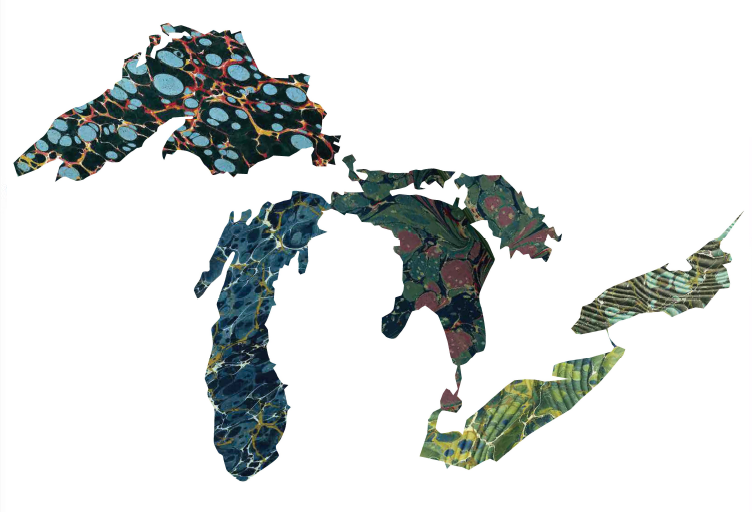Abundant Waters: Our Most Precious Resource


With water at the forefront of our minds in today's climate, the Clarke Historical Library's 2022 exhibit tackles an important question: how often do we actually think about our relationships with this most precious resource?
Water is arguably Michigan's defining feature. In Michigan, you are never more than six miles from a lake, stream, or waterway. The state’s geographical outline is defined by the Great Lakes, the largest freshwater system in the world. Beyond the “big” water, Michigan has more than 11,000 inland lakes, 76,000 miles of rivers, 6.5 million acres of wetlands, and more than 3,200 miles of freshwater coastline—the longest in the world. Water is the primary character in Michiganders’ stories from the earliest tribal histories, through industrial growth, to today’s vacation destinations. Abundant freshwater is at the root of why many choose to live, work, and play in the Great Lakes State. For most who live here, the abundance of fresh water is an aspect of our lives that we take for granted. Explore the world of relationships that connect us to these bodies of water through recreation, politics, commerce, and transport; our defining geography; early tribal histories; nurturing water springs; and environmental stressors.
The plethora of water sources and the activity connected to the water is profusely evident in the Clarke Historical Library collections. Water plays a central role in the foundation of cities, economic advances, and creation stories, which is highlighted by the objects, books, and manuscript collections. All aspects of life in Michigan have a relationship with the water. The exhibits displayed here reflect themes from the physical exhibit: politics, recreation, commerce, disasters, and water reverence. One component of this platform is completely new: the future of Michigan's water. Each exhibit hosts materials that display water's centrality to life in Michigan:

The Future: At CMU, the Biology Department's CMUBS and the Institute for Great Lakes Research has taken a multidisciplinary approach to understanding the complex issues affecting the Great Lakes Basin. Professors, students, and community members alike have banded together in an effort to conserve and protect the precious freshwater of the Great Lakes.
Political Waves: Water has been dubbed the "new oil." It will determine geopolitics, influence, diplomacy, and even conflict. While bodies of water form natural boundaries, people often share access. Michigan's boundaries themselves are tied up in water—with at least two state lines going through the Great Lakes.
Furs...Freighters...Fuels: The challenges of the Great Lakes—ice, climate change, storms, invasive species, erosion, pollution—inspired innovative transportation solutions so people can earn a livelihood. From the fur trade to urban and industrial growth, Michigan’s waterways have remained the most important conduit for commerce.
Nurturing Waters: Water has played an integral role in society throughout time. It is sacred not just to the Indigenous peoples of the Great Lakes but to all living creatures. The water within the Great Lakes Basin is the subject of many Tribal stories and is revered by many even beyond the basin itself.
Splashin' Around: The Great Lakes, the inland lakes, and the streams and rivers offer a wide range of activities from fishing to hiking, diving to cruising, and much more. Miles of beaches and waterways provide hundreds of camping, picnicking, paddle-boarding, canoeing, and national lakeshore areas for a thriving tourist industry. Sleeping Bear Dunes and the Pictured Rocks National Lakeshore boast thousands of visitors every year.
Dead Lakes, Shipwrecks, and Tombstone Towns: The Great Lakes both face and cause manmade and natural disasters. With navigable waters as dangerous as the seas, even experienced captains understand and respect the limits of the shipping season on the inland seas. Shipwrecks, erosion, and severe storms are among some of the natural hazards that threaten lives and property along the shorelines. There have been at least 25 killer storms affecting the region since 1847.
Please contact us if you wish to see something in person or have comments you would like us to address.










